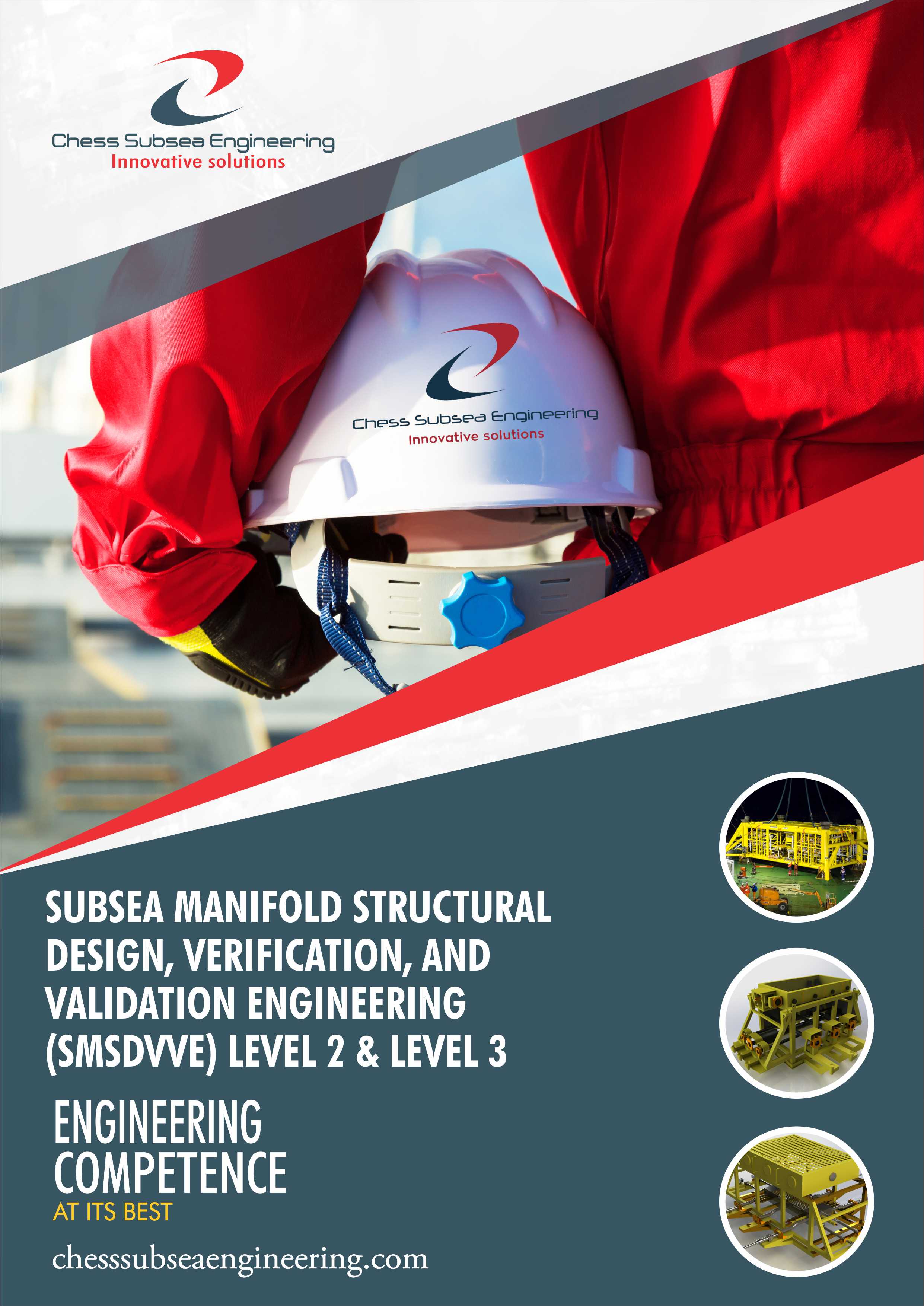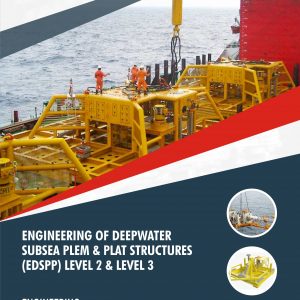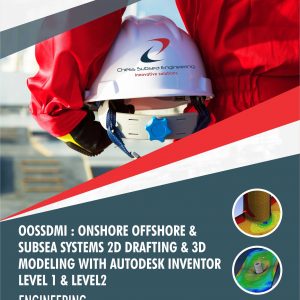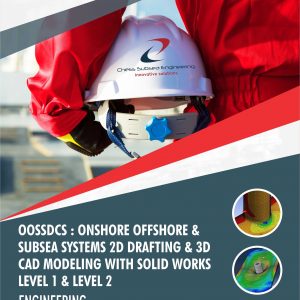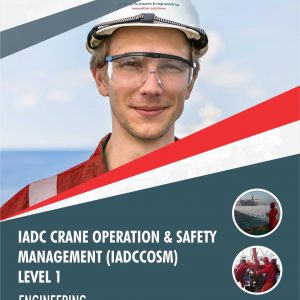Description
Subsea manifolds are critical components in offshore oil and gas production systems, which are used to regulate the flow of fluids between subsea wells and production facilities. The structural design, verification, and validation of subsea manifolds are crucial to ensure their safety, reliability, and longevity in the harsh and corrosive subsea environment.
The structural design of subsea manifolds must take into account the complex loading conditions they will be subjected to during their operational life, including static loads from fluid pressure, dynamic loads from waves and currents, and thermal loads from fluid temperature changes. The design must also consider the materials used, such as high-strength steels and corrosion-resistant alloys, to ensure that they can withstand the harsh subsea environment.
To verify the structural design of subsea manifolds, finite element analysis (FEA) is commonly used to simulate the complex loading conditions and evaluate the stress and deformation in the manifold structure. FEA can also be used to optimize the design and identify potential failure modes that may arise during operation.
Validation of the structural design of subsea manifolds involves testing of full-scale or scaled-down models in controlled laboratory or field environments. This testing can include pressure testing to evaluate the structural integrity of the manifold under high-pressure conditions, fatigue testing to assess the fatigue life of the structure under cyclic loading, and corrosion testing to evaluate the resistance of the materials to corrosion.
In addition to structural design, verification, and validation, other important considerations for subsea manifold design include ease of installation, maintenance, and repair, as well as compatibility with other subsea equipment and control systems. These factors must also be considered during the design process to ensure the safe and efficient operation of subsea manifolds in offshore oil and gas production systems.
SMSDVVE Level 1 to Level 3 covers Subsea Manifold Systems, Manifold Components & Deployment Techniques, Applicable API Specs & Valves, Manifold Control Systems, Modules & Piping Systems, Subsea Manifold Templates & Well Configuration, Subsea Manifold Design And Analysis, Subsea Manifold Flow Assurance, Subsea Manifold Installation, Subsea Manifold Risk Based Inspection and more
This course is designed to provide detailed knowledge of subsea manifold structural design and verification engineering.
Course Outline
- Subsea Manifold Types
- Template Manifold
- Cluster Manifold
- Valves
- Pipework
- Control System
- Framework Structure
- Foundation
- Tie-Ins To Wells And Flowlines
- Insulation
- Deployment Methods
- Subsea Manifold Components
- Subsea Valves
- Valve Type
- Size and Pressure
- Control System
- Subsea Modules
- Piping System
- Templates
- Modular Template
- Manifold Template / Center
- Well Spacer /Tie-Back Template
- Riser-Support Template
- Steel Frame Structures Design
- Structural Design & Analysis
- Manifold Piping Design & Pigging Loop
- Padeyes & Control Systems
- Cp Design i.e. Materials for Hp/Ht and Corrosion Coating, Materials For Hp/Ht Manifolds, Material Evaluation &
- Metallic Materials
- Hydrate Prevention and Remediation
- Installation Capability
- Lifting and Lowering System
- Load Control and Positioning System
- Motion Compensation
- Installation Equipment And Installation Methods
- Crane Barge
- Dp Rig and Drilling Riser
- Other Installation Method
- Installation Analysis
- Barge Lift
- Splash Zone
- Transferring to A&R Wire
- Lowering In Deep Water
- Landing On the Seabed / Subsea Structure
- Degradation Mechanism i.e. Initial Assessment, Cof Identification, Risk Criteria & Outcome
- Detailed Assessment i.e. Safety Class, Pof Calculation, Target Criteria & Outcome
- Example for a Manifold Rbi i.e.Initial Assessment , Detailed Assessment & Inspection Plan.

2D and 3D Structural Design of a typical Subsea Manifold with Components using CAD Software such as Inventor or Solid Work
Technical Support References
Ref 1: Introduction to subsea manifolds
Ref 2: Design principles for subsea manifolds
Ref 3: Design principles for subsea manifolds flow assurance
Ref 4: Design principles for subsea manifolds material selection
Ref 5: Design principles for subsea manifolds pressure containment
Ref 6: Subsea manifold design validation by finite element analysis (FEA)
Ref 7: Subsea manifold design validation by computational fluid dynamics (CFD)
Ref 8: Subsea manifold design validation by physical testing
Ref 9: Subsea manifold structural design steps
Ref 10: Structural design of subsea manifolds, including fatigue life analysis and design for extreme loads
Ref 11: Subsea manifold fatigue life assessment example
Ref 12: Subsea manifold piping design steps
Ref 13: Piping design of subsea manifolds, including flow assurance, erosion and corrosion protection, and fabrication and installation considerations
Ref 14: Design and integration of electrical and hydraulic control systems into subsea manifolds
Ref 15: Testing and validation of subsea manifold designs to ensure compliance with design specifications and industry standards
Ref 16: Maintenance and inspection requirements for subsea manifolds, including in-service inspection, repair, and replacement strategies
Ref 17: Subsea Manifold Design Verification & Validation Case Study
Assessment
Participant underpinning knowledge of Subsea Manifold Structural Design, Verification, and Validation Engineering will be accessed with short answer multiple-choice questionnaire at the conclusion of the course.
Professional Certificate
Issued directly by Chess Subsea Engineering Europe.
How to Register
Click here to download registeration booklet on msword and email completed booklet to info@chesssubseaengineering.org directly.





